Piper Tomahawk: Taking a Look at the Affordable PA-38
Founded by brothers Clarence and Gordon Taylor in 1927, the Taylor Brothers Aircraft Manufacturing Company became Piper Aircraft 10 years later after it was bought out by William T. Piper, the “Henry Ford of Aviation.”
Though best known for the iconic Piper J-3 Cub and its many variations, Piper Aircraft has contributed 160 certified models and nearly 150,000 aircraft to the world of aviation, the majority of which are still flying. One of the most affordable Pipers still available today is the PA-38, the Piper Tomahawk.
Piper Tomahawk: The Basics
The Tomahawk is a unique looking two-seat single-engine low-wing cantilever monoplane with a T-tail, sitting on fixed tricycle landing gear, and pulled by a twin-blade propeller. It was originally introduced to the world as the ideal trainer, designed with CFI’s in mind.
Piper reportedly surveyed over 10,000 flight instructors all over the United States before designing the Tomahawk and did their best to include every physical aspect and handling characteristic they desired in the perfect flight trainer. According to an article on Flight by Marty, the CFI’s desired “an aircraft with ‘realistic’ spinning characteristics, an aircraft heavier on the controls so it would make the transition to other touring types a little easier, a simple ‘in your face’ fuel system, increased visibility and more cabin space.“1
Thus, the heavy-on-the-yoke bubble-cabin Tomahawk with a bad reputation for spin stability was born.
The Cessna 152
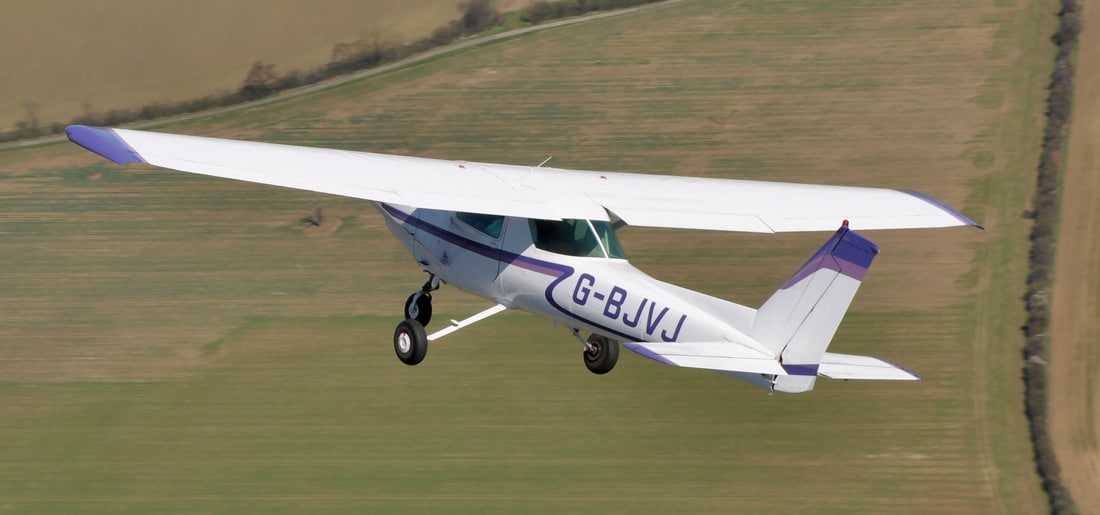 The relentless sun rose in the summer sky, reflecting off the tarmac as Chase trotted toward the Cessna 152 flight trainer. The little workhorse aircraft wore a slightly faded blue-and-white paint scheme, its weathered appearance acquired during thousands of student pilot flight hours. On this early June morning, 16-year-old Chase climbed into the Cessna’s cockpit for the first time, surveying the controls as he waited for his flight instructor. [Click to read more…]
The relentless sun rose in the summer sky, reflecting off the tarmac as Chase trotted toward the Cessna 152 flight trainer. The little workhorse aircraft wore a slightly faded blue-and-white paint scheme, its weathered appearance acquired during thousands of student pilot flight hours. On this early June morning, 16-year-old Chase climbed into the Cessna’s cockpit for the first time, surveying the controls as he waited for his flight instructor. [Click to read more…]
In its five-year production run (from 1977-1982, though interestingly, the Tomahawk was introduced in 1977 as a 1978 model), nearly 2,500 Tomahawks were built. The small, but roomy two-seat trainer was very affordable when introduced, and remains so today, though the prices increase with the model year. Post-1981 Tomahawks are designated as Tomahawk IIs and will be discussed a bit more in the Variants section.
General Characteristics and Specs for the Piper Tomahawk
The small two-seat trainer has two front-hinge doors for over-the-wing entry into the cockpit, which is bubble-shaped and loaded with windows, giving it exceptional near-360 degree visibility. The Tomahawk is powered by a 112 HP Lycoming 0-235 air-cooled engine and pulled by a 72-inch Sensenich fixed pitch propeller.
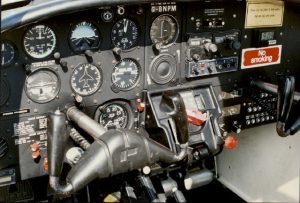
| Length | 23 feet 1.25 inch (7.4 m) |
| Height | 9 feet 1 inch (2.77 m) |
| Wingspan | 34 feet (10.36 m) |
| Wing Area | 124.7 ft2 (11.59 m2) |
| Wing Loading | 13.39 lbs/sq.ft. |
| Power Loading | 14.9 lbs/sq.ft. |
| Fuel Capacity | 32 gallons / 30 useful (121.1 L / 113.5 useful) |
| Fuel Burn (75% power, standard conditions)2 | 6.5 gph |
| Oil Capacity | 6 quarts |
Performance Specs
| Takeoff | 820 feet (249.93 m) |
| Takeoff (over 50’ obstacle) | 1,440 feet (438.91 m) |
| Landing Distance | 635 feet (193.5 m) |
| Landing Distance (over 50’ obstacle) | 1,462 feet (445.61 m) |
| Demonstrated Crosswind Component | 15 kts |
| Rate of Climb (sea level) | 720 fpm |
| Service Ceiling | 12,000 feet (3657.6 m) |
| Max Speed | 109 knots (125.44 mph, 201.87 km/h) |
| Cruise (75% power) | 100 knots (115.1 mph, 185 km/h) |
| Stall Speed | 49 knots (56.39 mph, 90.75 km/h) |
| Range | 468 nmi (538.57 mi, 866.74 km) |
Weights
| Empty Weight | 1,128 lbs (511.65 kg) |
| Max Takeoff Weight | 1,670 lbs (757.5 kg) |
| Useful Load | 542 lbs (245.8 kg) |
| Baggage Capacity/Size | 100 lbs (45.36 kg) / 20 cu.ft. |
Piper Tomahawk Variants
Piper Tomahawk II
The 1981-1982 models were renamed the Tomahawk II due to many improvements and enhancements regarding performance and overall quality. Among other improvements, the IIs were built with improved cabin heating and windshield defrosting performance, an improved elevator trim system, zinc-chromate anti-corrosion treated airframes, better soundproofing for the cockpit, and larger 6-inch wheels and tires for increased propeller ground clearance, and better performance on grass and dirt runways.
Piper Tomahawk – Real Pilot Talk
Rod Machado, Pilot/Flight Instructor
“It was designed by a committee in the sense that Piper began asking flight instructors what they would like to see in a training airplane. Ta-dah! A Tomahawk. This turned out to be one of the more peculiar training airplanes Piper invented. With its highly responsive T-tail, you could easily over-rotate on takeoff or landing and damage the empennage. We had that happen at our flight school and one little bump on the runway during landing and the entire empennage had to be reworked. When the airplane first appeared on the market I tried to spin one. Its nose pitched up and looked like it was going to flat spin. Piper fixed this tendency but I never spun one again. Perhaps the airplane got a bad rap but you certainly couldn’t say it was a hardy trainer like the Cessna 150 or the Cherokee 140/151. I don’t see many of these airplanes around today. This doesn’t make me happy since I want all airplanes to succeed, but that’s the way it is sometimes. Lesson learned? Don’t ask CFIs to help design an airplane. Instead, find out what pilots want in an airplane.”
BlueRooster, Pilots of America3
“The ‘Traumahawk’ is a nice little airplane to fly. It’s an honest airplane with no real nasty habits, but stalls require the use of rudder inputs more so than the Cessnas do. The audible stall warning device (‘oil canning’ of the skins) warns of an impending stall well before the break. The T-tail makes short and soft field ops kind of interesting, as it gets no wind from the prop, and doesn’t become effective until you reach about 40mph, then it comes in all at once, which can surprise some folks. But other than that it’s an OK airplane.”
Brian, CFIIG, Pilots of America4
“I like the Tomahawk better than the 152. Tomahawk is more comfortable (wider cabin), carries more fuel, and I think the Tomahawk is easier to land than the 152 (wide gear). Tomahawk was slightly faster but requires a bit more runway than the 152. Excellent points for a trainer. I could do 4 or 5 lessons in the Tomahawk before refueling. The 150/152 I had to refuel pretty much every other lesson. And I would much rather sit in a Tomahawk for 8 hours than a 152 … I think they are great airplane I have over 400 hrs of instruction time in them.”
The Problem with Piper Tomahawk Wings
The Piper Tomahawk has a wing lifespan of 11,000 hours, due to possible cracking in the wing spars that can develop into a life-threatening problem after that point. However, there is an STC available to extend the lifetime for up to 7,650 hours for about $4,300,5 which is probably cheaper than replacing the wings in the long-run (you can buy Tomahawk wings on many online used plane retailers) when you add in the cost of labor.
Depending on how often and how many years you intend to fly your Piper Tomahawk, you may never even need to think about replacing the wings or shelling out the cash for the time extension. If, like many pilots, you buy the Tomahawk intending to use it as a time-builder or weekend day-tripper, a used plane with 3,000 hours on it will have decades of flight time left on the wings.
The Piper Tomahawk Stall/Spin Controversy
As deliberately spinning a single-engine Cessna can be more difficult, the instructors Piper surveyed wanted a trainer that could more easily demonstrate spins. Well, Piper delivered on that, maybe too well. With the addition of NASA General Aviation Whitcombe-1 airfoils (GAW-1), among other design aspects, the Piper Tomahawk was designed to take specific piloting input to recover from a spin (versus flying itself out of a spin like other trainers2) to allow pilots to increase their proficiency in spin recovery.6
This led to a higher than average stall/spin accident rate, which earned the Tomahawk a conflicted reputation, and nicknames such as ‘Traumahawk’ and ‘Terrorhawk’. Marty, at Flight, says that “The PA38 accident rate ranged from 0.336 to 0.751 fatal stall/spin accidents per 100,000 flight hours, compared to 0.098 to 0.134 for the 150/152. Having said that, the Piper Tomahawk has a one-third lower accident rate per flying hour than the comparable Cessna 150/152 series of two-place trainers overall, suggesting that – for whatever reasons – it is the safer aircraft.“1
An AD issued in 1983 (83-14-08)7 mandated additional stall strips be added to the inboard leading edge to improve and standardize stall characteristics.
According to a flight safety review from AOPA, the Tomahawk may take more time to recover from a developed spin than a Cessna. They add that the basic spin recovery method of “opposite rudder, nosedown elevator, and neutral ailerons” is recommended, while noting an important revision to the pilot’s operating handbook, which says ‘The immediate effect of applying normal recovery controls may be an appreciable steepening of the nosedown attitude and an increase in the rate of spin rotation. This characteristic indicates that the aircraft is recovering from the spin, and it is essential to maintain full antispin rudder and to continue to move the control wheel forward and maintain it fully forward until the spin stops.’“8
Brian, (CFIIG/ASEL) says “The only problem with spinning a Tomahawk is that it actually comes out of the spin too easily and nose-low causing it to accelerate past VNE in the recovery if one is not ready for it. The structural failures didn’t occur in the spin, they occurred in the spiral that occurred after the plane recovered from the spin and exceeded Vne. Also note that nearly all of the accidents were with instructors or DPE’s onboard doing intentional spins that had little or no experience spinning Tomahawks. Don’t intentionally spin a Tomahawk, and you will never have a problem. If you do spin it, be prepared to recognize when it comes out of the spin and recover quickly without exceeding Vne.“4
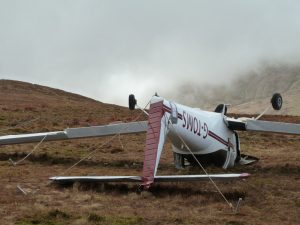
Regarding his overall feeling on the Tomahawk, Marty at Flight concludes that “If nothing else, the PA38 has withstood the scrutiny of time. It has proven itself over and over as the preferred training platform by numerous organizations, instructors, and flying schools. As far as stalls go, I always found the PA38’s stalling characteristics 100% completely and utterly predictable assuming the correct technique was applied.“1
AOPA expresses a similar view, speaking about the higher stall/spin accident rate. “Does that make it unsafe? No, it only means that the PA38 must be flown precisely in accordance with the Pilot Operating Handbook and with instructors who are proficient in stalls and spin recovery in that aircraft…“9
In their safety review, AOPA notes that while it is easy to focus on the negative, there are many positive traits to consider, including “far superior cockpit visibility,” which should help reduce the potential for a mid-air collision; a superior night training safety record; and fewer fuel exhaustion and starvation accidents when compared to similar models.8
Were Production Tomahawk Aircraft Different From the Certified Aircraft?
On March 5, 1994, near Inman Kansas, a Tomahawk crashed with a CFI and a private pilot onboard, during a biennial flight review. Both sustained fatal injuries in the crash.10 The NTSB’s investigation resulted in five safety recommendations, which they outlined in a July 10, 1997, letter to the FAA’s Acting Administrator Barry L. Valentine. In that letter, the NTSB claimed, among other things, they’d been informed that there were significant differences in stall characteristics between the aircraft that was certified and the production aircraft.11
The NTSB’s Letter
First, they said that in reviewing a certification flight testing report from Piper, “The report indicates that only the turning flight stalls (with flaps retracted) were performed. The Board found no documentation that turning flight stalls (with flaps extended) or accelerated stalls (in both flap configurations) was ever tested.” They go on to say that after certification was granted and Piper moved production of the PA-38 to their Lock Haven, PA facility, the Safety Board “learned of reports of significant differences in the stall characteristics between the certification-tested airplane and the production airplanes.”
According to testimony the NTSB received from a Piper engineer following the Kansas accident, shortly after Piper began delivering Piper Tomahawk production aircraft, they began receiving complaints from owners and operators that the “lateral directional characteristics at the stall were abrupt and unpredictable, and that the airplane exhibited a rapid roll as the stall occurred.” So in 1979, in an attempt to improve stall characteristics for the airplane, Piper modified the wing design of the Tomahawk by adding two more stall strips. (The Tomahawk was originally designed with two stall strips. The strips are triangular cross-section blocks about 8 inches long and a half-inch wide placed on the outboard leading edge of each wing, and are meant to modify the stall characteristics of an airplane by inducing a stall at a controlled location along the wing.)
AD 83-14-08 eventually mandated that all aircraft be retrofitted with the additional stall strips. However, the NTSB said the additional stall strips may not have solved the problem. They said that in a letter to the Safety Board they received in 1995, a former test pilot employed by Piper at the Lock Haven facility from 1978-84 claims that the aircraft he flew were “totally unpredictable, one never knew in which direction they would roll-off, or to what degree, as a result of the stall.” The NTSB says these views were echoed by a second test pilot, who worked at the Lock Haven facility for at least 6 years, starting in 1979. The second pilot said that not only were the airplanes unpredictable in a stall, “Each airplane did not perform stalls the same from one flight to another.”
Finally, in January 1997, the NTSB interviewed a third former test pilot, who worked for Piper from, 1973-78, held the company title of chief pilot, and served as the FAA Delegation Option Authority (DOA) and Designated Engineering Representative (DER). In his opinion, the production Tomahawks being built at Lock Haven were “nothing like the article certified [by the FAA] as far as stall characteristics are concerned.” The third test pilot also claimed that the additional stall strips did not eliminate the observed stall/spin characteristics and that Piper test pilots who were performing post-production flight tests were shocked by the stall characteristics the observed.
The NTSB says they then reached out to the FAA to see if, and when, the agency had evaluated the stall characteristics of production Tomahawks, in either the original two-strip or modified four strip wing configuration. They received a letter back, dated March 3, 1997, in which the FAA said “We requested that Piper search the DOA files for any indication that the FAA was involved in any such testing, and the search did not reveal any such tests. Piper conducted stall/spin tests at their Lock Haven, Pennsylvania facility prior to the issuance of AD 83-14-08; however, only Piper DOA flight test pilots participated, and the FAA was not involved in those tests.”
The FAA’s Response
In a letter dated March 31, 1998, the FAA responded to the above (and other) issues brought up by the NTSB.12
The FAA starts by saying that in order to address the claim that the wings of production airplanes were not structurally the same as the certification airplane, they conducted a review of the latest production drawings. “The comparison of the development engineering orders with the latest drawing release confirms that all changes required/approved during development and certification of Piper PA-38-112 wings were incorporated into the production wings. Therefore, the production wings are equal in strength and stiffness to the certification test wings, and this conformity was verified prior to tests.”
They also address the three former Piper test pilots the NTSB gathered testimony from. The FAA says that discussions with Piper and a review of the production flight test records “show that none of the employees cited by the Board were employed as production test pilots. Additionally, one of the individuals did not work at the Lockhaven facility during the years that the PA-38-112 was produced. The production flight test reports for all PA-38-112 airplanes do not indicate that a single aircraft failed to meet all type design specifications, including those tested with the two stall strip configuration.”
Finally, they note that at the time of the NTSB’s safety recommendations and letter, they were unable to find a report that they were involved in flight testing the four stall strip configuration. “However, the FAA has located the report (Type Inspection Report A4150EA-DO dated August 27, 1979). This report documented the results of stall and spin tests on a four stall strip configured Piper PA-38. The results were satisfactory.”
Based on this, it would appear that the production model aircraft were actually the same as the aircraft that was certified, but it’s an interesting side-trip on the Tomahawk’s journey.
Operating and Purchase Costs
According to AOPA, “Piper stopped producing the Tomahawk in 1982 and doesn’t make all the parts for the Tomahawk anymore. However, there are companies that sell PMA parts – FAA-approved Parts Manufacturer Approval, so getting parts isn’t a problem.“13
AOPA Insurance Services estimates an average cost, Piper Tomahawk flown by a low-time pilot will cost $1,000 to $1,500 per year to insure.14 On Trade-A-Plane, there are just a few Tomahawks up for sale, ranging from about $25,000 to $33,000, and on Barnstormers there are postings for the aircraft and aircraft parts as well.
According to username “kyleb” on Pilots of America, the annuals for the Piper Tomahawk are fairly cheap (about $800). “There is a 100-hour tail inspection that used to cost about an hour’s shop time, and there is a bracket in the tail that gets replaced every 3,000 hours (IIRC). That’s probably a $500 job, but I did most of the work and got a friendly IA to source the part, handle the paperwork, and help when the job required more than 2 hands.“4 He goes on to say that his Tomahawk burned around 6-7 gph, making it an affordable day-tripper.
Conclusion
The Piper Tomahawk is one of the few aircraft I’ve written a profile on that I’m seriously thinking about purchasing for myself! Though it is kind of funny looking in that 1950’s-imagining-the-space-age way, it’s affordable to purchase and operate, was built in part to prepare student pilots for larger aircraft, and seems as though it would strengthen any pilot’s rudder skills, regardless of experience level.
Featured Image: courtesy of Svetlan Simov – AviationListOnline.com
References and Sources:
1 – Piper Tomahawk versus Cessna 152, Flight, Retrieved 4-4-17
2 – Piper Tomahawk, AOPA, Retrieved 4-4-17
3 – Are Piper Tomahawks Dangerous in General?, BlueRooster, Pilots of America, Retrieved 4-4-17
4 – Piper Tomahawk Thoughts, Brian, Pilots of America, Retrieved 4-4-17
5 – Tomahawk PA-38-112 Wing Life Extension, Sterling Aviation Technologies, Retrieved 4-4-17
6 – Piper PA-38 Tomahawk, Wikipedia, Retrieved 4-4-17
7 – AD 83-14-08, FAA, Retrieved 4-4-17
8 – Tomahawk Safety Review, Bruce Landsberg, AOPA, Retrieved 4-4-17
9 – Stall/Spin: Entry Point for Crash and Burn?, AOPA, Retrieved 4-4-17
10 – NTSB Identification: CHI94FA097, NTSB, Retrieved 4-4-17
11 – NTSB Safety Recommendation Letter, NTSB, Retrieved 4-4-17
12 – Accident CHI94FA097, Safety Recommendation A-97-043, NTSB, Retrieved 4-5-17
13 – The Piper Tomahawk: Designed By Instructors For Instruction, AOPA, Retrieved 4-4-17
14 – Pilot Briefing: Budget Buy, Alton K. Marsh, AOPA, Retrieved 4-4-17



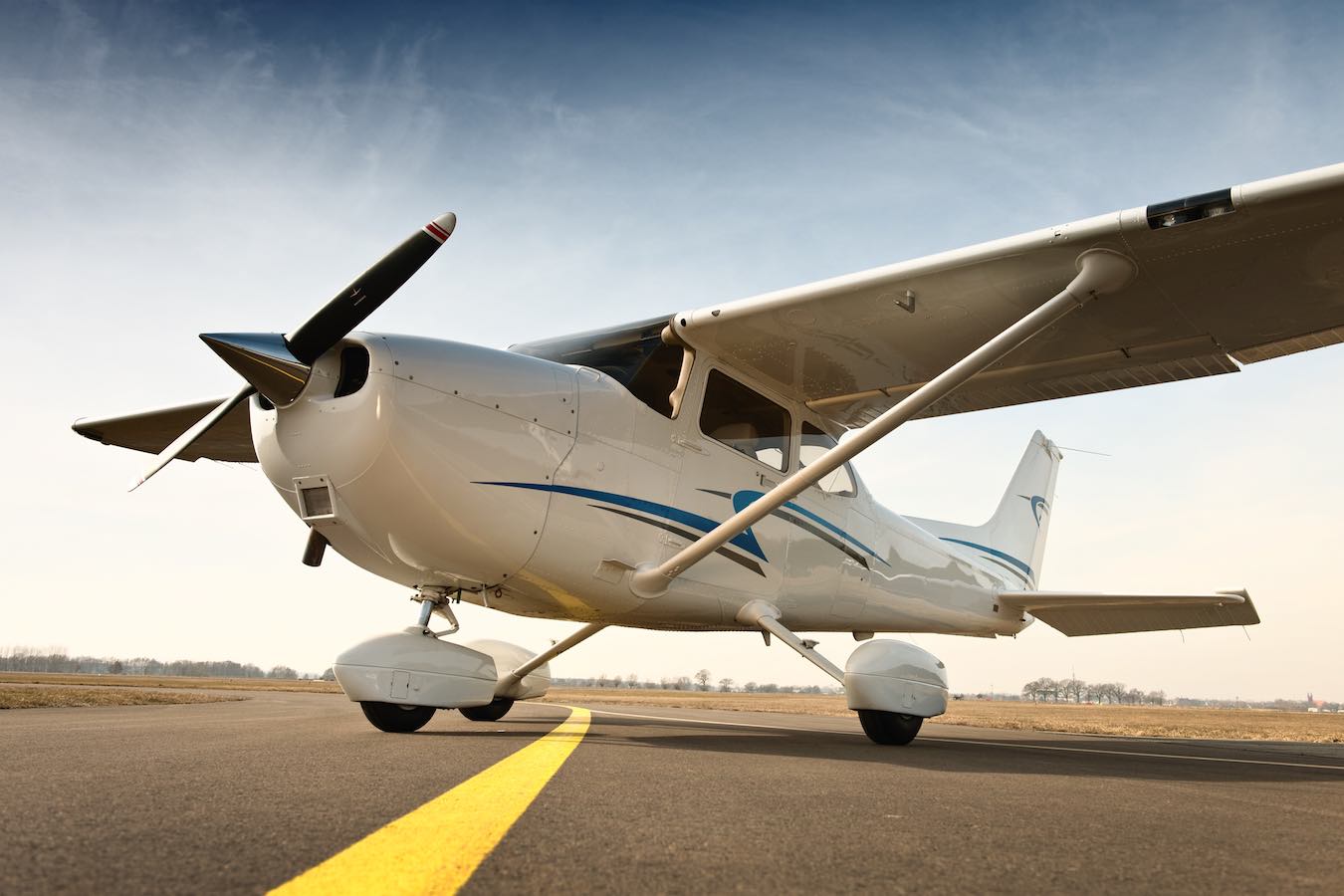
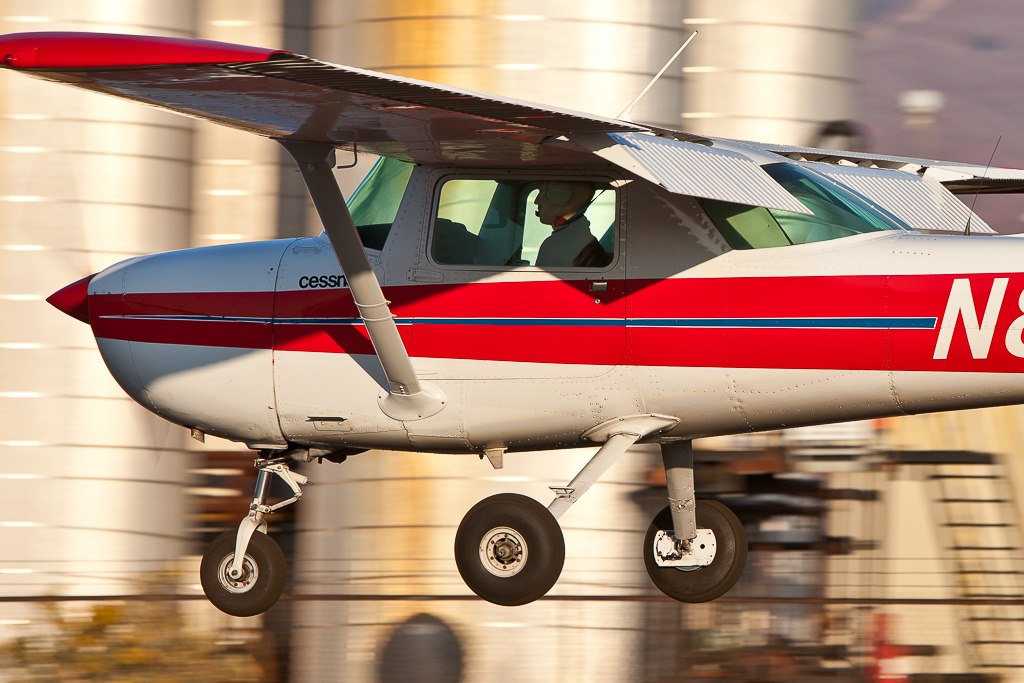
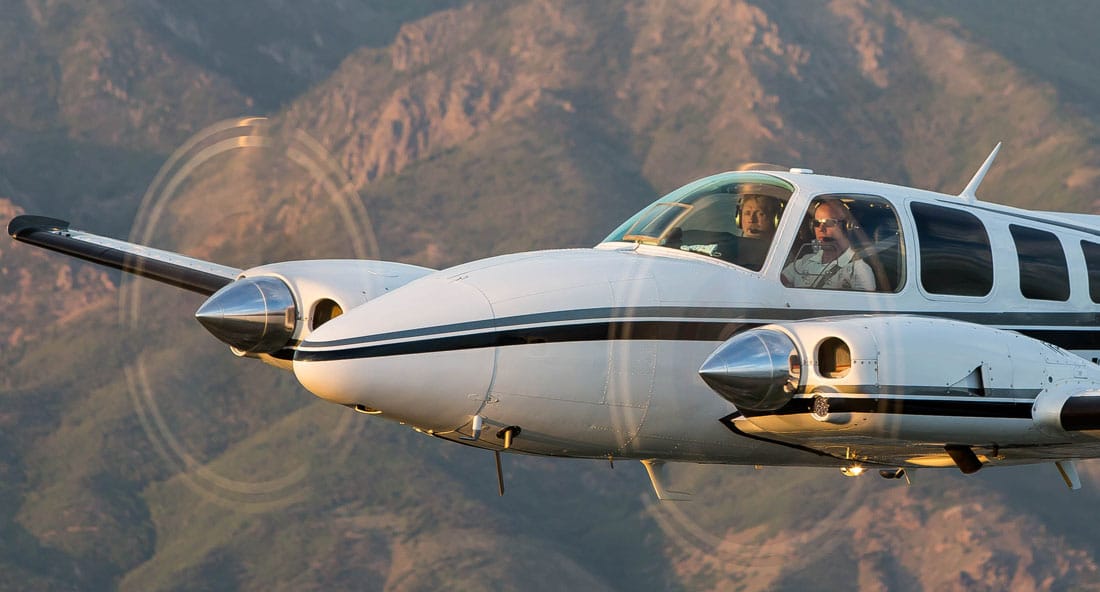
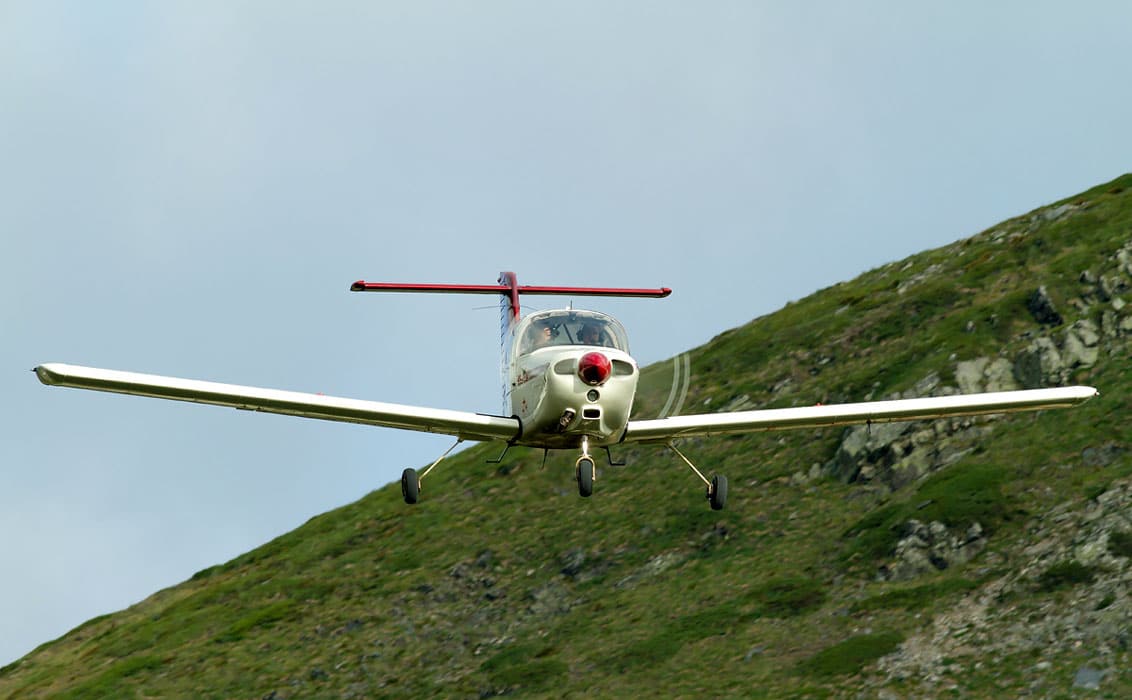
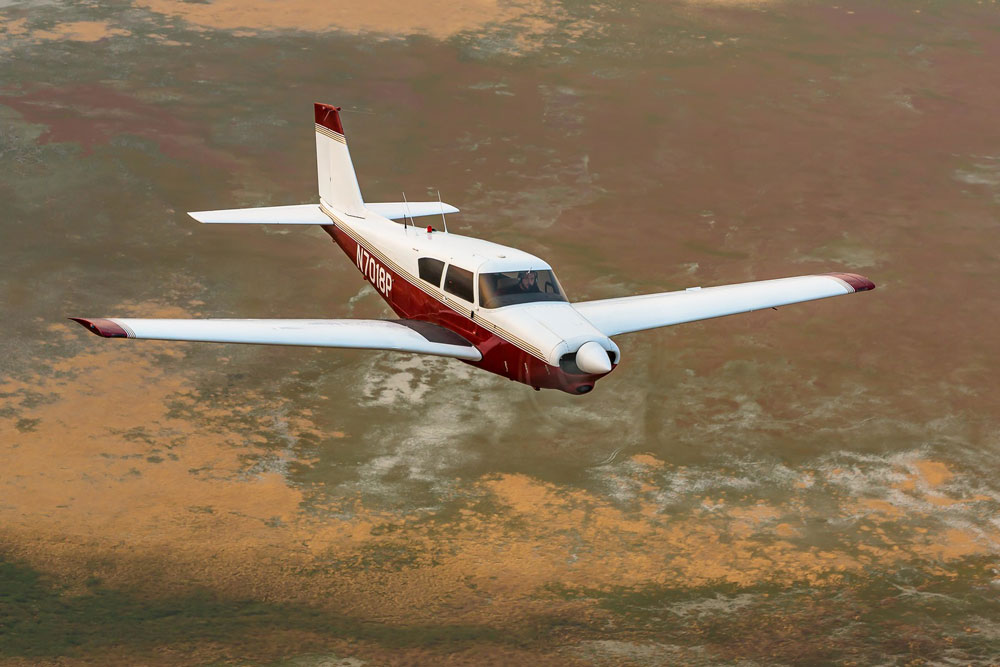
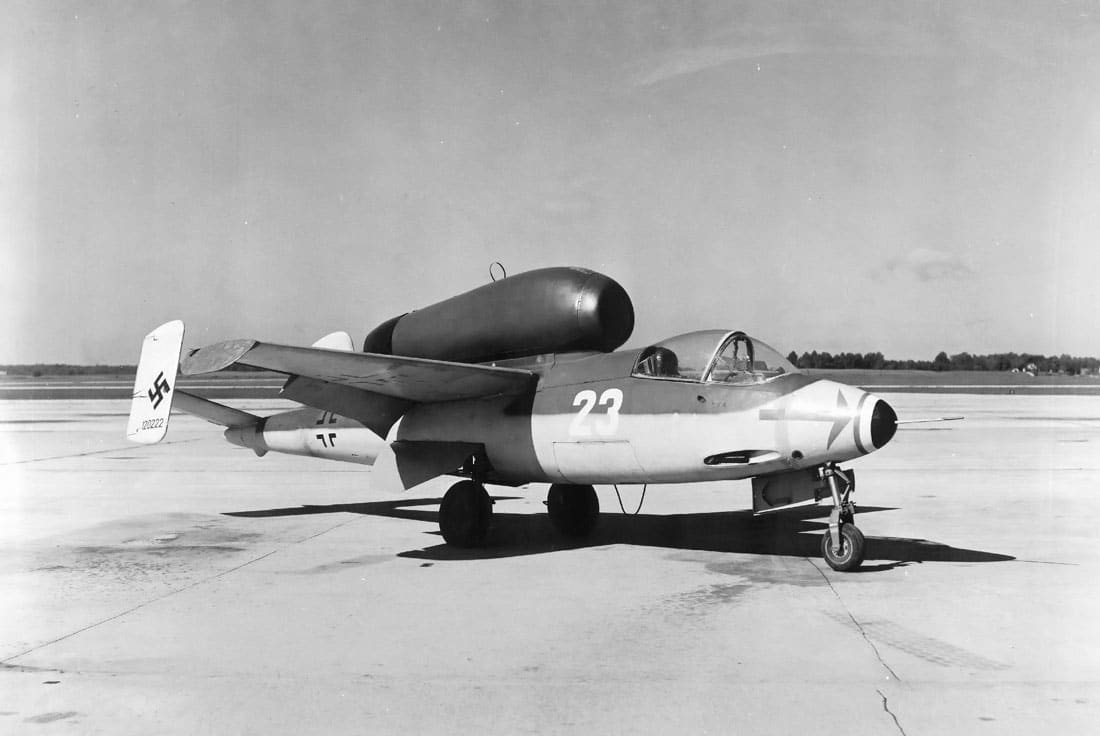
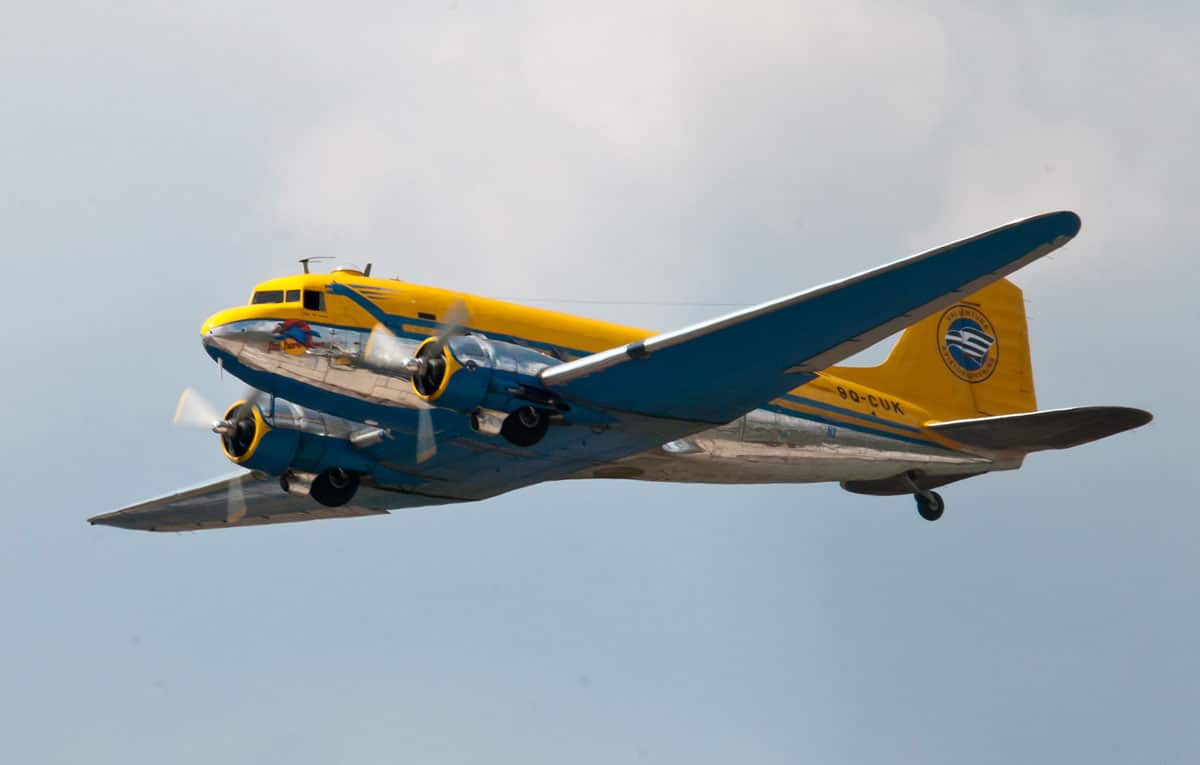
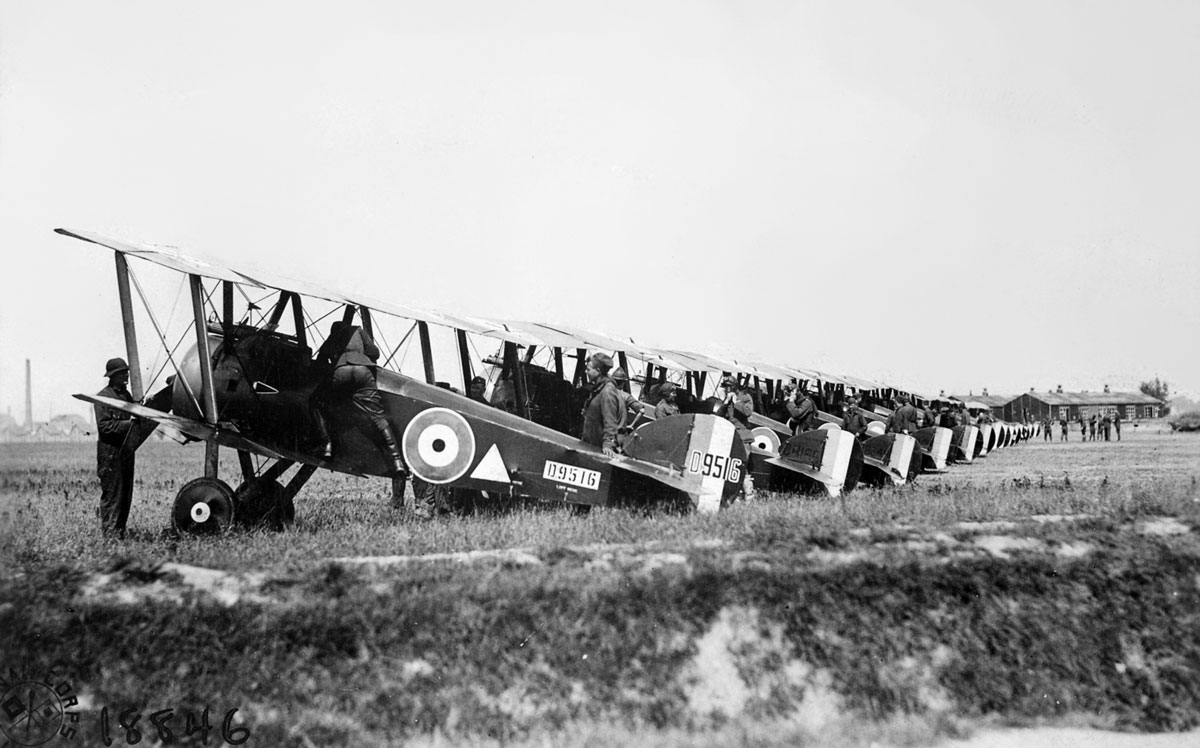
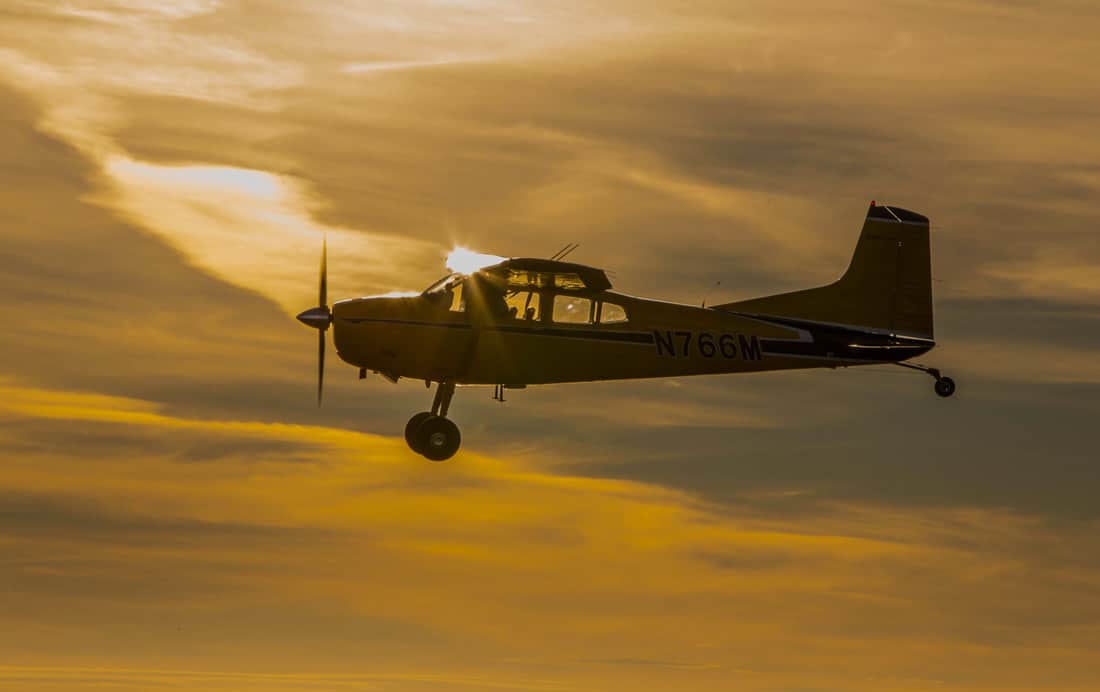
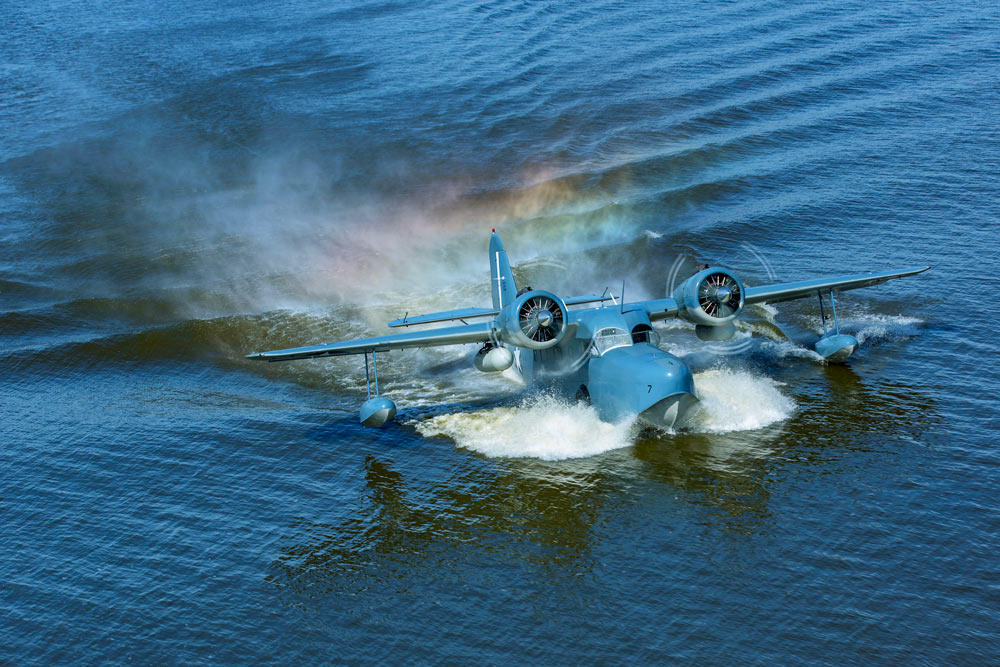
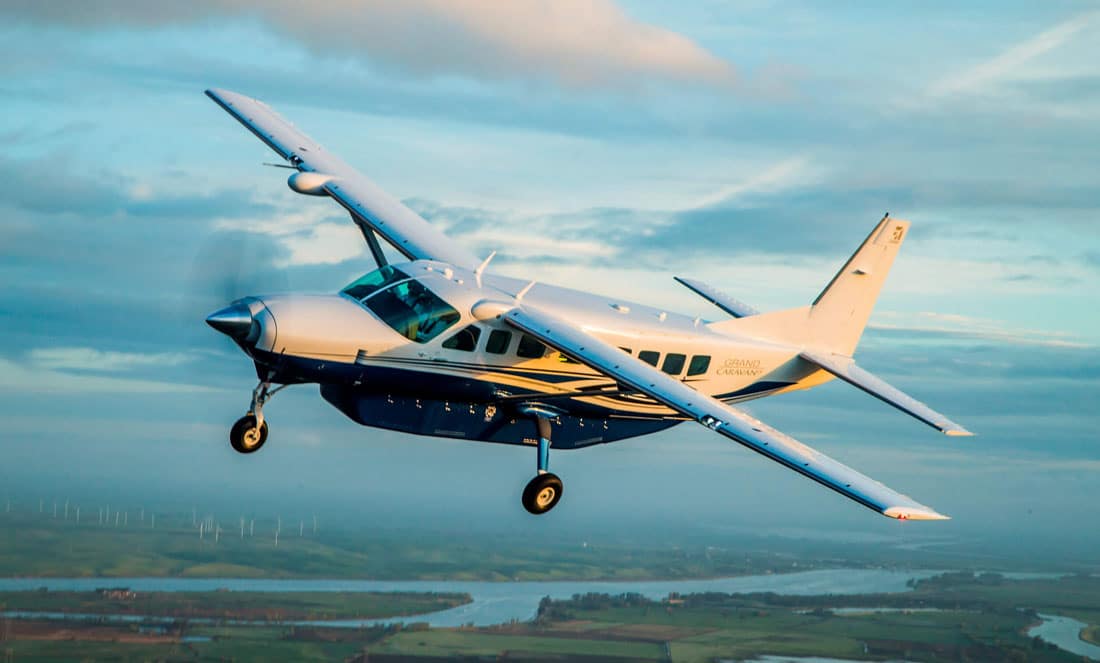
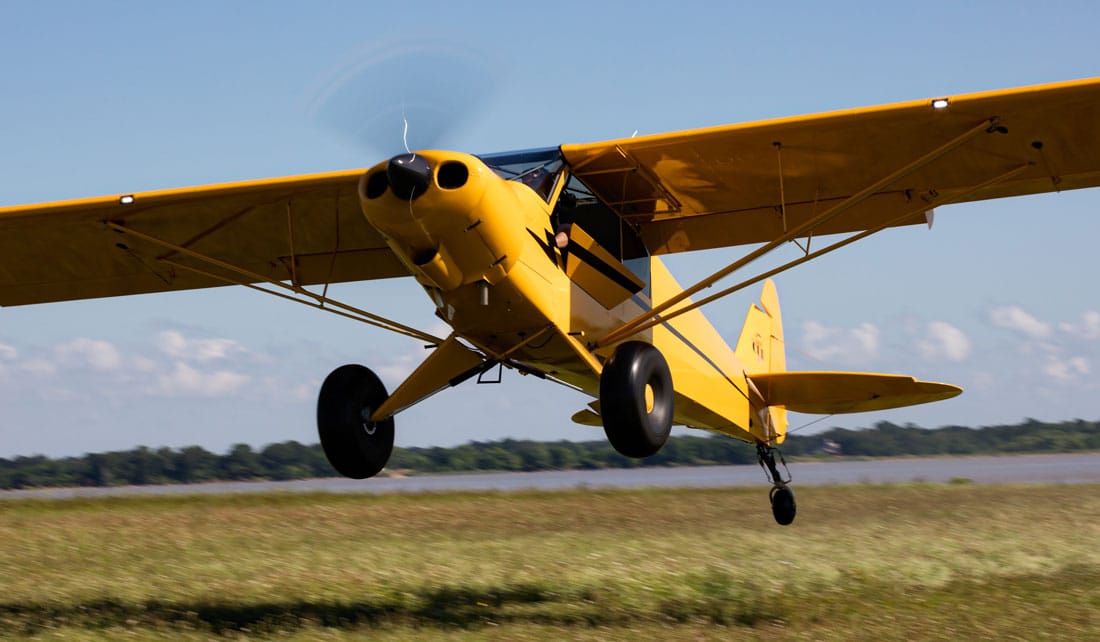
Geez, you were able to fly a Traumahawk in the 21st Century? I thought they’d all long since gone on to a better life as beer cans. And I thought I was the sole survivor from those dark days when they were still flying.
While in high school in 1980, I took about 20 hours of lessons on the Traumahawk, long enough to solo twice, once just around the pattern and once futzing around for an hour or so within a 15-mile radius of home drome. Having checked those boxes, I counted myself lucky to have survived that long and quit flying for many years. Understand that aviation had been my passion all my life to that point and I was an accomplished radio control pilot with hundreds of hours and quite a few competitive trophies (and RC is harder than being in the VFR cockpit IMHO), so knew my flight basics and what good flight characteristics meant. It was not an easy decision to walk away from a dream of flying. I blame it entirely on the inadequacies of the Traumahawk.
The big problem with this machine was that, in contrast with the usual trend of docile trainers, it was INTENTIONALLY designed to have utterly nasty stall characteristics. The idea was, if you learned stall RECOVERY (as opposed to prevention) on a Tomahawk, you’d be able to handle stalls in anything you flew the rest of your career.. Seriously. This was even specifically mentioned as a selling point in articles on the then-new machine in magazines of the day like “Flying”, “Plane and Pilot”, etc., which I subscribed to back then. But there were 3 huge flaws in this logic. First, it was a product of that misguided, WW1-era approach to flight training of emphasizing recovery instead of prevention. Second, the airframe wasn’t sturdy enough to withstand the stresses created by the built-in nasty stall characteristics if not corrected INSTANTLY. And 3rd, the nasty stall characteristics naturally resulted in huge altitude loss in any stall, along with highly unusual attitude. So, if you were only trained to recover from but not prevent stalls (which was the way back then regardless of your training machine), and thus ignorantly got yourself into a stall while in proximity to the ground, you WERE going to die in a Traumahawk. And if you hadn’t honed your recovery reflexes from the get-go on the Traumahawk, so weren’t expecting to suddenly be inverted and spinning, so weren’t preternaturally quick at slamming in corrective controls, the damn thing would fold up and you’d die even at high altitude.
Most airplanes have “stall strips” on the root leading edges, to make the inner wing stall before the tips. The “Traumahawk” instead had them at the tips, to FORCE tip stall. And thus, when doing intentional stalls, the Traumahawk would buffet just once or twice, then immediately flip over on its back with the nose dropping. The 1st turn of an uncorrected spin was thus a barrel roll heading down, taking about 1 second to roll back right-side up and complete 1 turn of the spin while burning 100 feet of altitude. Thereafter, it went into an extremely rapid flat spin, right-side up and losing only about 50′ per revolution but spinning at 120 RPM with about 2-3 lateral Gs making it a strain to reach the opposite rudder pedal to stop the spin. I’m sure you can appreciate that this would kill people used to well-mannered aircraft. Especially as the Traumahawk was only rated for 3-turn spins. 4 or 5 would actually bend it permanently, more would break it. Later on, modifications moved the stall strips in to the roots, lawsuits having made Piper realize this training strategy was a bad idea. I’m sure that if any Traumahawks still survive today, they have that modification.
Anyway, the training routine was doing lots and lots of intentional stalls with the student tensed and ready to slam in full throttle, full down elevator, and full opposite control with both aileron and rudder simultaneously at the 1st hint of wing drop in either direction. Proficiency was when you could stop the roll at about 60^ and limit altitude loss to about 60-70 feet. Then you moved on to 3-turn spins, which was HARD to let happen given the reflexes you’d honed over the previous weeks, and always seeing the big red warning on the sun visor about never doing more than 3 turns of a spin if you wanted to keep living. Insane.
Funny story. About 10 years later, my wife got into flying gliders so I tried my hand at that. So I went up in a Schweitzer 2-33 with an instructor and he had me go through the usual routine of intentional stalls. But so ingrained were the harsh lessons of the Traumahawk than when this poor old antique glider FINALLY managed, after much coaxing, to give its pathetic excuse for a so-called stall, my Traumahawk reflexes kicked in. As the wings remained level, I just slammed the nose down while my right hand fumbled about for a throttle that wasn’t there. The negative Gs incurred threw my instructor out of his seat. He, being a long-time glider pilot and not a Traumahawk refugee, hadn’t buckled his seat belt, Good thing the plexiglass canopy was strong enough to keep him in the aircraft, and he wasn’t totally incapacitated. He was still able to tell me how to use the spoilers to land, which I’d never done before, but he was incapable of controlling the plane himself. So he went off to the hospital and the glider had to be inspected due to overstressing. So as you can see, the Traumahawk caused problems even with other aircraft.
You are wrong in many ways.
Yes, the stall characteristics of the Tomahawk where much more aggressive than those of a Cherokee or a Cessna 152 or 172, but not more aggressive than those of other bigger planes for which the Tomahawk trained you. The plane was thus intentionally designed to require it to be actively and precisely flown and have a “bigger airplane” feel. The idea was that it is better to learn this way than learn to fly in “self-flying” planes and then be challenged when you transitioned to a bigger plane with higher performance. A friend of mine and myself did the private pilot training together and we had our check ride the same day. I did my PPL in the Tomahawk and my friend in the C-152. After becoming PPLs, we checked out and transitioned in the “opposite” planes. For me, transitioning to the 152 was easy, boring and, at 6′ 4 “, super uncomfortable. I quickly returned to the Tomahawk after a few hours in the 152. My friend found it much more challenging to master the Tomahawk, but he felt in love with it and afterwards we both ended up flying the Tomahawk together and sharing many local and cross-country flights.
The article explained quite well the spin recovery part so I will not go into that. Just remember that when the Tomahawk was designed spin recovery was part of the PPL training requirements. And if you want to learn more about its spin characteristics, look up Tomahawk spin in youtube and go for the low quality black and white video that contains a good portion of the spin test certification flights where the plane is tested with a lot of spin entry conditions and with all sort of correct and incorrect recovery inputs and it always recovers quickly once the correct spin recovery inputs are applied, even after many turns of spins with intentional bad control inputs. Don’t believe me, go and look by yourself. You can aslo find modern videos of instructors nowadays teaching spins in the Tomahawk and pilots practicing spins in the Tomahawk. And it is simply not true that it “was rated for only rated for 3-turn spins. 4 or 5 would actually bend it permanently, more would break it.” Spins are approved when flown in the utility category and there is no limitation in the number of turns. Up to 17-turns spins were tried during flight testing. And the thing would “fold up”? Show me ONE accident report of an in-flight structural failure like this in the Tomahawk. I’ve read several dozens of Tomahawk accidents reports (I actively looked for them to learn from the mistakes of others and even sent letters to the NTSB asking for more details regarding certain investigations and, to my surprise, they sent me the info requested) and I’ve NEVER came across a SINGLE in-flight structural failure.
Now, what is that of recovery instead of prevention? Recovery was already addressed by you, but the Tomahawk is EXCELLENT to learn stall prevention. It’s low wing / T-tail design created a very clear buffet when you were approaching to stall and well in advance to the full stall (the buffet started at about 55 to 60 knots, the plane fully stalled at 50 or less), when the turbulent air that started to separate from the wing roots hit the tail cone and fin while keeping the elevator out of it, fully effective and with the same behavior with or without power since it remained outside of the prop wash.
Did I say “when the air started to separate from the rots”? Of course!!! The Tomahawk very clearly stalled roots first. I don’t know where on Earth did yo get that it was designed to stall wingtips first. Yes, it did have a set of stall strips in the middle of the flaps zone and another set in the middle of the aileron zone, but they were much much shorter than the length of either the flap or aileron. They were there to provide a mor consistent stall behavior, but, again, the roots clearly stalled first and the ailerons remained FULLY effective throughout the approach to stall and during the stall warning activation and aerodynamic pre-stall buffet, all the way to the point of full stall. That made it an excellent plane to learn stall prevention and avoidance and precise slow flight management. When the plane fully stalled, it was quite violent (especially if you compared it with the C-152), typically included a wing drop, and the ailerons were not useful with the plane fully stalled, but know what? AILERONS MUST NOT BE USED IN A STALL BECAUSE THEY CAN AND WILL INDUCE A SPIN IN ANY AIRPLANE, including the Cessnas. Recover from the stall FIRST (i.e. lower your angle of attack), THEN roll wings neutral. That made it an excellent plane to learn full stall recovery too, and I practiced that A LOT. A proper recovery from an approach to stall could be accomplished without barely any loss of altitude and a proper recovery from a full stall could be accomplished within 100 ft of altitude loss.
Then this gem: “the training routine was doing lots and lots of intentional stalls with the student tensed and ready to slam in full throttle, full down elevator, and full opposite control with both aileron and rudder simultaneously at the 1st hint of wing drop in either direction.”. Man, you were taught stall recovery very bad. But that’s not the plane’s fault.
And if your instructor focused in recovery rather than prevention, that’s not the plane’s fault either. Complain with your instructor not with the plane.
Then you want to a different plane with a different instructor and you put the plane in enough negative Gs to seriously hurt your instructor, but you blame the “skills” learned in the Tomahawk. Oh, and another nice instructor, one that doesn’t buckle up.
Yes, the rate of fatal spin accidents in the Tomahawk is much higher than in the C-152. I blame for that pilots and instructors that were used to planes where a stall that hardly developed into a spin and where the spin recovery was just let go on the controls. The kind of pilots that later died in Barons and Mooneys when the planes resulted too much for what they were used to. There is a reason why, even with a higher spin-accident rate, the overall fatal accident rate is lower in the Tomahawk than in the Cessna 152: A Tomahawk makes better pilots (with a proper instructor, of course).
I am so sorry you had such awful instructor and such a bad training experience. My experience, with 180 hours in the Tomahawk, is totally different. And 180 hours is not much by any stretch, but it is many times the 20 you had.
Wow, Jim. Just Wow. I’ll second Gabriel’s comments and not bother with a lot of typing. I’ve owned both the original Tomahawk and a Tomahawk II, and still love flying them both. Also, as it happens, I’m also a CFI-Glider and have made thousands of flights in the 2-33 glider. They may look antique-ish but they fly nicely, and they stall and spin reliably and predictably. I’m sorry your instructors in both airplanes seem to have done you a disservice.
(ps: The area over the head of the instructor in the 2-33 is NOT plexiglass. There is a small plexiglass skylight forward of the seat, but he wasn’t departing the glider through it, even with no seat belt. However, I can’t think of a single glider pilot who doesn’t wear both a lap belt and double shoulder belts in a glider all of the time. The low wing loading makes them very bouncy!)
That’s funny story but not so for the flight instructor makes me think twice before I fly a tomyhawk. I learned on a piper 140 Cherokee then purchased a warrior which I loved to fly ,sorry I sold it. It was a good plane easy to fly and comfortable ,did many cross country trips in her. New cost in 1974was$22000.00far cry from outrageous prices today for same aircraft.upgraded to a 235hp version fast and carry a lot of weight. But liked to drink fuel.at 5bucks a gallon sold it may get and arrow next time.or Mooney.
I learned to fly in Cherokee 140’s and eagerly rented about 12-15 times the then new Tomahawk. In a lifetime of flying, it is the only plane I do not like. It was noisy and vibrated a lot for an underpowered plane. And the stall characteristics scared me. The dramatic wing drop despite a careful stall entry was very unnerving. I moved on to renting Warriors for trips, fun flying, and my instrument ticket. I loved how it flew, and you could actually fly with four onboard with no bags and reduced fuel. It’s honest flight characteristics were a joy and helped me earn my instrument rating.
Great article. on the Tomahawk reminds me of “split rims” on trucks many years ago.
Their legend precedes them even today in some places. Walk into a tire shop and say “I have some split rims I want you to work on”. They reflexively duck behind the counter. This was because not everyone was educated on proper procedures in handling them. This resulted in a small number of fatalities and the legend was born. Same with the Tomahawk.
I have been flying since 1964 and had never sat in an airplane when I took my fist lesion, Me being from a family of 7 boys and being out in a cotton field out in State of Arkansas and see a plane fly over I always wondered what the pilot was doing or thinking. My family was so poor the poor looked down on us. But I would say to myself! when I get grown I’m going to try and save enough money to pay someone to take me for an airplane ride. In my spare time I would read every book I could find how they were training pilots to fly those old Stearman airplanes with an instructor. They spoke a lot about turn and banks and the use of the udders among other things so I got some book learning about how to fly an airplane. The first airplane I ever got to walk up and look inside was a little Cessna 120 that a young man took out back seat, passenger seat and all panels inside to hold down on weight and put a squire box in the baggage department to do some crop dusting. When the boy came in for a landing to get more crop dusting powder and just letting engine idle, I walked up and asked him? how do you read all those gages? All he said was, you just get use to them. At that time I did not even know one was supposed to call them interments and best I remember all he had was airspeed, compass, and airspeed. I called the airport in West Memphis, Arkansas and asked if they had someone who could take me for an airplane ride and the person I talked to said it was a little to windy to fly that day and call back in the afternoon and wind might die down a little. I made that call to cancel my first ride and the person I got on the phone said if I wanted to go for a ride he would take me. I did not know the person taking me for a ride did cooperant flying and was a CFI also to make some extra money on the side. I did explain to him I had never road in an airplane and try and not make me sick. We walked out and got into a straight tail Cessna 150. As we were taxing out for runway he was explaining what the rudders were for and the yoke, me being a smart kid, I told him I knew all about that. We pulled out on the runway and he asked if I wanted to try and take the airplane off. I told him I would try and gave it the throttle and when I felt like it was ready to fly, pulled back on yoke a little and pane started lifting off. His statement was? I thought you told me you had never flown an airplane. He took me up and started showing me how to make turns above a point which was big tree down about 2,000 feet. He told me I did good as I did not gain or lose any airspeed. Then he asked if I felt sick and I told him in no way. He said we would do some stalls which he showed me how to do with no problem and then he spoke up and let me show you how to spin this plane. He did one telling me all the time what he was doing. Then he told me to try and had no problem. As we were about to arrive back at airport he told me to try and land the airplane as it was almost like he showed me how to do stalls. I came in and what I thought was a perfect landing and he told me I did make a good landing but I made a 3 point landing. I asked him what that meant and he said I put all 3 tires on the pavement at one time on landing. When we pulled up to the FBO he told me I needed to start taking flying lesions’ and I told him I could not afford to take flying lesions. It told me he would give me a break per his hours and he did that to just make extra money. He said he would have to work me in, due to his other flying. To make a long story short he signed me off to solo in 4 hours and 15 minutes. Then he told me I needed to buy myself an airplane and save some money on rental. I found an Aaronic Champ 7AC and man told me had to have $1,200 dollars for that plane. My instructor was out on a trip and a young CFI had just got his licenses to be a CFI and I asked if I had someone to drive us over to the Memphis, TN airport where plane was at and if I bought it could he help me fly it back and he said no problem. I met up with the owner and first thing he told me was he priced the plane to low and would have to have $1,400 dollar’s for it. I gave in and spent the last dime I had except a little left over. That young CFI did call the tower as plane did not have any radios and gave us permission to take off on taxi way with them using their lights. I flew the plane myself back to the West Memphis airport and young CFI told me he had better land the airplane. He came in to do a wheel landing and plane was bouncing all around and gave it full throttle and we went back in for another landing and same thing happening. I told him to let me take controls and see if I could land it. So, what I did as I did not know anything about a wheel landing. I brought in airplane at about stall speed and pulled stick straight back and tail when hit first and mains barked a little, but stuck it on the pavement. Come to find out that young CFI had never flown a tail dragger. My regular CFI then took over and checked me out and signed me off and we started my cross countries and all the things that had to be done and built up my hours to pass my written to get my private. I got all my ratings and crop dusting was getting to be a big thing in Arkansas and the Piper Pawnee started getting real popular and a very large farmer went and bought a brand new one and I became his piolet. One may not know how much work that is. The Pawnee was fast across those field, but as the day would get hotter did not have as much lift. I would come back in and tell the boys to lighten up a little which I don’t even think now they knew what I meant. A few time would fly to end of field with trees and pull up and see I was not going to clear and throw the plane on its side and let wing go between two big trees. One time I did that and clipped a tree and wing tip fabric was just blowing. I came back in and pointed my finger toward that wing tip and they grabbed some duck tape and wrapped up good and off I went again. Now back to the Subject on the Tomahawk. Over my 50 years of flying I have owned over 50 different makes of planes. I remember the fist Tomahawk I ever saw when they first made them and see one setting at an airport and tell myself. That is the ugliest airplane I have ever seen and never gave it much thought. In year 1976 I saw one listed in Trad-A-Plane for sale and not far from my base airport. My wife and I drove to look at plane and the owner had a new paint on it and reman engine with less than 10 hours SMO. In our talks the owner said after he had all that work done and spent all that money he had lost his medical and asked me if I had ever flown a Tomahawk and I told him I had never sat in one. Me being a person trying to get him down on price, he made the statement he was giving me the airframe for free as all he was trying to get out of the plane for what he had spent to have the engine majored. We got in the plane and I took of and to fly around the field to makes some landings and when I lifted off and started making my left turn pretty steep, he told me I had better watch out as doing that the plane may go into a slip. I did not pay that any attention as I had the feel for different plane and it it tied to slip I told him that was what rudders were fore. He came in and was going to show me how to land the plane and I saw right away he was coming in way to fast and bounced it around a little. I took control and made 3 perfect landings and we filled out all the paper work and I flew plane back to my base airport. I knew I needed to get a CFI to sign off for me and at my base airport had a CFI that had flown for Eastern before the bellied up and had him to take me for a check ride and he told me he had never flown a Tomahawk before and me putting it through different monoverse all he told me he had read a lots of bad reports on the Tomahawk, but I just had proved what he had read was not true. I have owned 3 Tomahawks and on 2 now. A 1979 with the 0 235 L2C engine rated at 115 HP and a what they call Piper Sparhawk which had the upgrade STC 125 HP engine All I can say that was a waist of money as I can’t tell much difference in weight, speed, but has about 100 foot per minute better climb rate. I sold one of the last 1982 Piper Tomahawks they built and one of the things I did notice with the way they changed the timing it had just a little more thrust on take off. The reason I sold it was I got more than it was worth at that time. So, in closing this out I read and hear what ones say about the Tomahawk they are wrong in my opinion. I have talked to many CFI and they will make a statement that they are afraid of those Tomahawks. I then asked them how many hours they have flown a Tomahawk and their very words, NONE! Then they make the statement from what they have read. The ones that write about what they found about spins and stalls need a little more practice in my thinking. Yes I have stalled my completely a many of time and have noticed in a full stall and when it dose break, uses those stiff rudders to keep level and straight and when it meet the horizon just put yoke forward and level off. I have read where some stated in a left turn spin is different.. I have never noticed that but just one time and was my fought, The reason I think the problem was I had not managed my fuel proper and had more gallons in the left tank. The Tomahawk will do more than what Piper put in their Operating Handbook and I sure they gave a little margin to be safe on their part. I read all what ones say about fuel burn per hour is 6.5 GPH. One cross county, calm day and 80% power the best I have ever got was 6.2 per hour and on the Sparahawk the best I have ever got was 7 GPH. With 32 gallon fuel on board and states will burn 30 gallon of that fuel. I manage my fuel every 30 minutes from one tank to the next. And what is so good about the Tomahawk it is good for over 400 miles cross country without fuel stops. The wide cabin space is a plus on a big boy like me..
Regards.
Larry J. Allison
email larryjallison@gmail,com